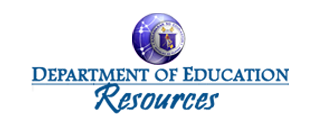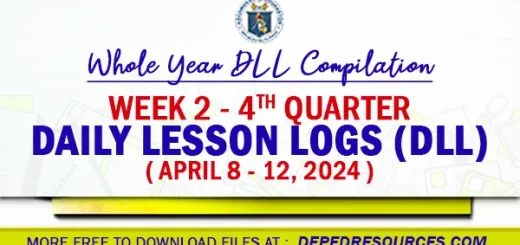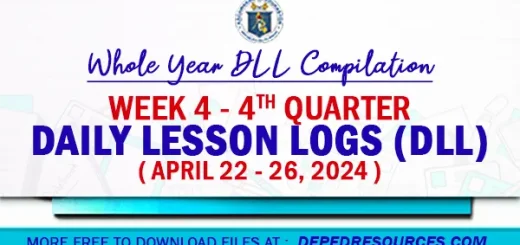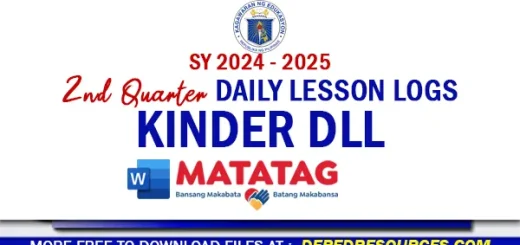1st Periodical Tests – All Subjects Now Available | 2018 Files
You will find the Google download links for the 1st Periodical Tests -All Subjects after the article below. You may read the following article or you may scroll down directly for the links.
Credits to all the owners and file creators.
Classroom Assessment
Strong classroom assessment practices support student achievement by informing students, parents and teachers on where students are at with their learning and for establishing new learning goals.
Classroom Assessment is a systematic process of gathering information about what a student knows, is able to do, and is learning to do. Assessment information provides the foundation for decision-making and planning for instruction and learning. Assessment is an integral part of instruction that enhances, empowers, and celebrates student learning. Using a variety of assessment techniques, teachers gather information about what students know and are able to do, and provide positive, supportive feedback to students. They also use this information to diagnose individual needs and to improve their instructional programs, which in turn helps students learn more effectively.
Classroom Assessment must be considered during the planning stage of instruction when learning outcomes and teaching methods are being targeted. It is a continuous activity, not something to be dealt with only at the end of a unit of study. Students should be made aware of the expected outcomes of the course and the procedures to be used in assessing performance relative to the learning outcomes. Students can gradually become more actively involved in the assessment process in order to develop lifelong learning skills. Evaluation refers to the decision making which follows assessment. Evaluation is a judgment regarding the quality, value, or worth of a response, product, or performance based on established criteria and curriculum standards.
Evaluation should reflect the intended learning outcomes of the curriculum and be consistent with the approach used to teach the language in the classroom. But it should also be sensitive to differences in culture, gender, and socio-economic background. Students should be given opportunities to demonstrate the full extent of their knowledge, skills, and abilities. Evaluation is also used for reporting progress to parents or guardians, and for making decisions related to such things as student promotion and awards.
Diagnostic assessment may occur at the beginning of a term or a unit of study, or whenever information about the prior learning of a student is useful. Various types of diagnostic assessments (tests, journals, performance-based assessment, etc.) may be used to collect that information. Teachers may use diagnostic assessment to find out what students know and can do, identify student strengths and plan instruction which builds on and extends those strengths
Classroom Assessment target difficulties, identify the precise nature of them, and plan instruction to meet those difficulties ! make informed decisions regarding where to focus instructional time and effort
Formative assessment is similar to diagnostic assessment but differs in that it provides ongoing feedback to the teacher about the effectiveness of instruction. Formative assessment encompasses a variety of strategies, used selectively to accomplish one or more of the following purposes:
- monitor student learning and provide feedback to students and parents
- identify areas of growth ! motivate students and provide incentive to study
- help focus attention and effort ! emphasize what is important to learn
- provide practice in applying, demonstrating, and extending knowledge, skills, and attitudes
- encourage goal-setting and monitor achievement of goals
- reflect on program structure and effectiveness, and modify or adjust teaching as necessary
Summative assessment occurs most often at the end of a unit of study. The primary purposes are to determine the knowledge, skills, and attitudes that have developed over a period of time, to summarize student progress.
Meaningful Assessment
Assessment should occur in authentic contexts that allow students to demonstrate learning by performing meaningful tasks. Meaningful assessment achieves a purpose and provides clear and useful information. For example, it may identify misunderstandings in student learning, and provide corrective feedback and direction for further instruction. Assessment improves instruction and learning. Meaningful content and contexts for assessment help students by engaging their attention and encouraging them to share their work and talk about their learning processes. Students need to take an active part in assessment. When students understand assessment criteria and procedures and take ownership for assessing the quality, quantity, and processes of their own work, they develop self-assessment skills. The ultimate goal of assessment is to develop independent life-long learners who regularly monitor and assess their own progress. The Teacher’s Role in Assessment In the classroom, teachers are the primary assessors of students. Teachers design assessment tools with two broad purposes: to collect information that will inform classroom instruction, and to monitor students’ progress towards achieving year-end learning outcomes. Teachers also assist students in developing self-monitoring and selfassessment skills and strategies. To do this effectively, teachers must ensure that students are involved in setting learning goals, developing action plans, and using assessment processes to monitor their achievement of goals. Teachers also create opportunities for students to celebrate their progress and successes. Teachers learn about students’ learning and progress by regularly and systematically observing students in action, and by interacting with them during instruction. Because students’ knowledge, and many of their skills, strategies, and attitudes are internal processes, teachers gather data and make judgments based on observing and assessing students’ interactions, performances, and products or work samples. Teachers demonstrate that assessment is an essential part of learning. They model effective assessment strategies and include students in the development of assessment procedures such as creating rubrics or checklists. Teachers also collaborate with parents and with colleagues regarding student assessment. The quality of assessment largely determines the quality of evaluation. Valid judgments can be made only if accurate and complete assessment data are collected in a variety of contexts over time. Managing assessment that serves a multitude of purposes and audiences is a challenging task. Teachers must continually balance not only the assessment of their students’ progress in the development of knowledge, skills and strategies, and attitudes but also their own purposes and audiences for information collected during assessment.
NEW! 1st Periodical Tests Now Available
GRADE 1 1st Periodical Tests
- GRADE 1 First Periodical Test in ARALING PANLIPUNAN
- GRADE 1 First Periodical Test in ESP
- GRADE 1 First Periodical Test in MAPEH
- GRADE 1 First Periodical Test in MATHEMATICS
- GRADE 1 First Periodical Test in MTB
GRADE 2 1st Periodical Tests
Periodical Test
- GRADE 2 First Periodical Test in ARALING PANLIPUNAN
- GRADE 2 First Periodical Test in ENGLISH
- GRADE 2 First Periodical Test in ESP
- GRADE 2 First Periodical Test in FILIPINO
- GRADE 2 First Periodical Test in MAPEH
- GRADE 2 First Periodical Test in MATH
- GRADE 2 First Periodical Test in MTB
- GRADE 2 First Quarter Table of Specification in MTB
TOS
- GRADE 2 First Quarter Table of Specification in ARALING PANLIPUNAN
- GRADE 2 First Quarter Table of Specification in ENGLISH
- GRADE 2 First Quarter Table of Specification in ESP
- GRADE 2 First Quarter Table of Specification in FILIPINO
- GRADE 2 First Quarter Table of Specification in MAPEH
- GRADE 2 First Quarter Table of Specification in MATHEMATICS
GRADE 3 1st Periodical Tests
- GRADE 3 First Periodical Test in ENGLISH
- GRADE 3 First Periodical Test in FILIPINO
- GRADE 3 First Periodical Test in MTB
- GRADE 3 First Periodical Test in SCIENCE
- GRADE 3 First Periodical Test in ARALING PANLIPUNAN
- GRADE 3 First Periodical Test in ESP
- GRADE 3 First Periodical Test in MAPEH
- GRADE 3 First Periodical Test in MATH
GRADE 4 1st Periodical Tests
- GRADE 4 First Periodical Test in ARALING PANLIPUNAN
- GRADE 4 First Periodical Test in ENGLISH
- GRADE 4 First Periodical Test in EPP
- GRADE 4 First Periodical Test in ESP
- GRADE 4 First Periodical Test in MAPEH
- GRADE 4 First Periodical Test in SCIENCE
- GRADE 4 First Periodical Test in FILIPINO
- GRADE 4 First Periodical Test in MATHEMATICS
- GRADE 4 First Quarter Table of Specification in FILIPINO
- GRADE 4 First Quarter Table of Specification in MATHEMATICS
GRADE 5 1st Periodical Tests
- GRADE 5 First Periodical Test in ARALING PANLIPUNAN
- GRADE 5 First Periodical Test in ENGLISH
- GRADE 5 First Periodical Test in SCIENCE
- GRADE 5 First Periodical Test in EPP
- GRADE 5 First Periodical Test in EPP-AGRI
- GRADE 5 First Periodical Test in EPP-HE
- GRADE 5 First Periodical Test in EPP-IA
- GRADE 5 First Periodical Test in EPP-ICT
- GRADE 5 First Periodical Test in ESP
- GRADE 5 First Periodical Test in FILIPINO
- GRADE 5 First Periodical Test in FILIPINO – Version 2
- GRADE 5 First Periodical Test in MAPEH
- GRADE 5 First Periodical Test in MATH
- GRADE 5 First Periodical Test in MATH – Version 2
GRADE 6 1st Periodical Tests
- GRADE 6 First Periodical Test in ARALING PANLIPUNAN
- GRADE 6 First Periodical Test in ENGLISH
- GRADE 6 First Periodical Test in FILIPINO
- GRADE 6 First Periodical Test in MATHEMATICS
- GRADE 6 First Periodical Test in MUSIC
- GRADE 6 First Periodical Test in SCIENCE
- GRADE 6 First Periodical Test in EPP
- GRADE 6 First Periodical Test in ESP
Please visit our website from time to time for new and unannounced additional uploads. Thank you.
You may also request for specific files in our Facebook Page.
Click Here. Don’t forget to LIKE our Page!
Please LIKE and SHARE so everyone would benefit from these files. Thank you!
LIKE US on Facebook! Click Here.
















Hoping for the next browse on this website, i can download grade8 science 3rd and 4 quarter dll
Why is it that only Music in MAPEH has 1st periodical test?